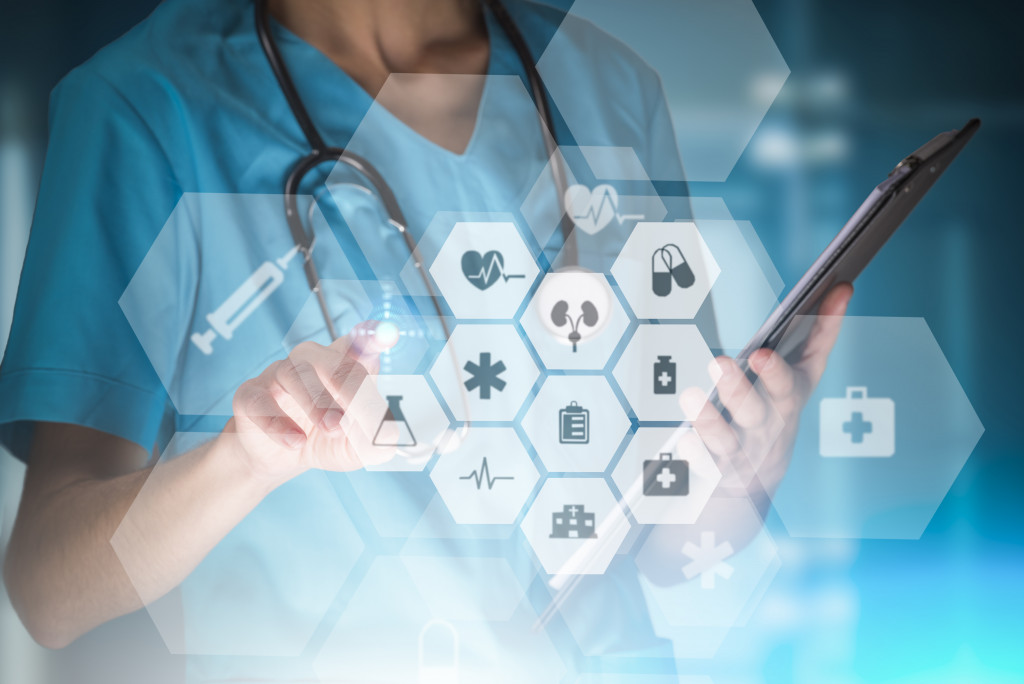Disclaimer: This website provides health information for educational purposes only and is not a substitute for professional medical advice, diagnosis, or treatment. Always seek the guidance of a qualified healthcare provider with any questions you may have.
Since the early days of medicine, healthcare teams have searched for better ways to improve patient outcomes. In recent years, medical practices have transformed with new technologies and treatments. It has led to improved patient care and more positive results.
Some of these advances are seen in how medical teams are now able to do more with less. That’s why it’s vital to understand the different medical practices that make a difference in patient outcomes. Here are some of the most popular ones you should know about.
Telemedicine
Telemedicine is one of the most promising medical advances in recent years. This technology allows doctors and other healthcare professionals to provide care remotely. It has shown positive feedback in improving access to care, particularly for patients in rural areas. Telemedicine can also help reduce costs and wait times for appointments.
Although telemedicine is still in its early stages, it has opened great opportunities to improve patient outcomes. Today, there are many telemedicine applications available that anyone can use for various purposes. These include monitoring vital signs, providing diagnosis and treatment, and sharing medical records.
It’s a one-of-a-kind technology that has the potential to change how healthcare is delivered.
Minimally Invasive Surgery
In the past, surgery was often the last resort for treating various conditions. But thanks to advances in medical technology, minimally invasive surgery is now an option for many patients.
This type of surgery involves smaller incisions and minor damage to surrounding tissues. It also has a shorter recovery time and less risk of complications. As a result, patients can resume their daily activities sooner and experience less pain.
Plus, minimally invasive surgery can happen using robotic technology. It gives surgeons greater control and precision, which leads to even better patient outcomes.
Precision Medicine
Precision medicine is a new approach to disease treatment personalized to each patient. It means that treatments are based on the individual’s genetic makeup, lifestyle, and environment.
By taking all of these factors into account, doctors can create a more targeted approach to treatment. As a result, patients are more likely to respond positively to the treatment and experience fewer side effects.
In addition, precision medicine can help improve the accuracy of diagnosis. That is because doctors can use data from genetic tests to identify the cause of a disease.
Overall, precision medicine can revolutionize the way diseases get treated. It’s an exciting new field showing great promise in improving patient outcomes.
Remote Patient Monitoring
Remote patient monitoring (RPM) is a way to collect medical data from patients at home using digital technologies. This data is then transmitted to healthcare providers to monitor the patients’ health status and make decisions about their care.
RPM is helping improve patients’ quality of life and reducing hospital readmissions. It’s also been cost-effective, making it a popular choice for healthcare providers.
Agencies for home health care are adopting this technology at a rapid pace. That’s why it’s crucial to understand how RPM works and its potential benefits.
Virtual Reality
Virtual reality (VR) is another technology that is starting to be popular in the healthcare setting. It offers a realistic, immersive experience that can be useful for various purposes.
For example, professionals can use VR for creating simulations for medical training. It can help them learn and refine their skills without putting patients at risk.
In addition, VR is being used to help treat conditions such as anxiety and pain. Studies have shown that VR can be an effective way to distract patients from their distress. It can also help them feel more relaxed and less anxious.
VR is a promising technology that has great potential. It’s still in its early stages, but it shows a lot of promise for the future of healthcare.
Electronic Health Records
Electronic health records (EHRs) are digital versions of a patient’s medical history. They contain all vital information about a patient’s health, including their medical conditions, medications, and test results.
EHRs have many benefits. They make it easier for doctors to access a patient’s medical history and make better-informed decisions about their care. They also help reduce the risk of medical errors and improve care coordination.
Overall, EHRs are helping to improve the quality of healthcare. They’re an essential part of the modern healthcare system and will continue to play a vital role in the future.
Medical advances have led to improved patient care and more positive outcomes. These advances include telemedicine, minimally invasive surgery, precision medicine, remote patient monitoring, virtual reality, and electronic health records. Each of these practices can change how healthcare is delivered and improve patient outcomes.
As the healthcare landscape evolves, it’s crucial to stay up-to-date on the latest advances. This way, you can ensure that you’re getting the best possible care for your health needs.

